By Rick VanSickle
“Do you have the new Blake Boulevard wines,” I ask the clerk at the Wine Rack store. “Yes, it’s right here and it’s flying off the shelf. It’s a staff favourite.”
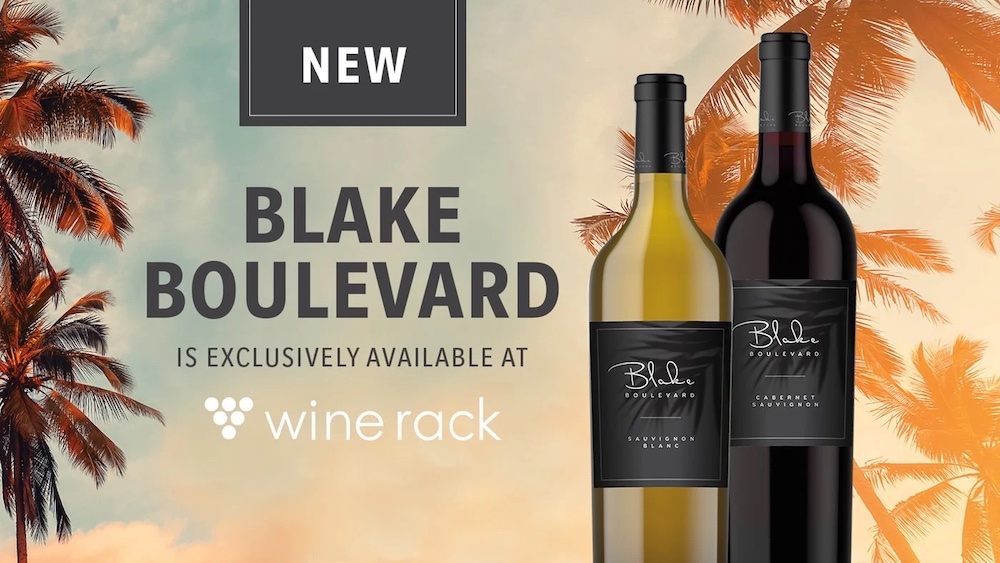
The wine in question is one that merged into my IG feed recently. I was curious about where the wine came from as the Instagram content provider (influencer? Not sure) did not offer that information. Since there was a link, I clicked it and arrived at the Wine Rack, a Canadian owned and operated chain of independent wine shops operating on grandfathered licences that give them advantages the vast majority of VQA-only wineries in Ontario will never have.
I ask the clerk where the Blake Boulevard wines come from as it’s not on the label anywhere. “California,” she says. But isn’t it a blend, I ask, knowing that wines like this are usually of the ‘blended’ kind. “Well, it’s ‘primarily’ from California,” she says. Everyone just loves it.” Well, good to know.
Wine Rack, owned by Arterra Wines Canada (you know, Jackson-Triggs, Inniskillin etc.), is one of a precious few big wine companies that are permitted to operate the nearly 300 independent wine shops in Ontario. At Wine Rack you can buy Le Clos Jordanne, Jackson-Triggs VQA reserve wines, icewines (all fantastic VQA wines), and everything else made at the giant wine company. And that includes IDB (International Domestic Blend) wines that are anything but Canadian, with 75% foreign grapes blended into Ontario-sourced grapes. These wines are sold in a separate section from the VQA wines at LCBO stores, but meld into the array of wines at Wine Rack stores with little or no obvious difference between them.
The advertising for the “new” Blake Boulevard brand features swaying palm trees, an enticing label, and a west-coast vibe. The clerk at the store where I bought the bottle never mentioned the crucial fact that the wine contained at least a small portion of Canadian grapes, even though it must by law.
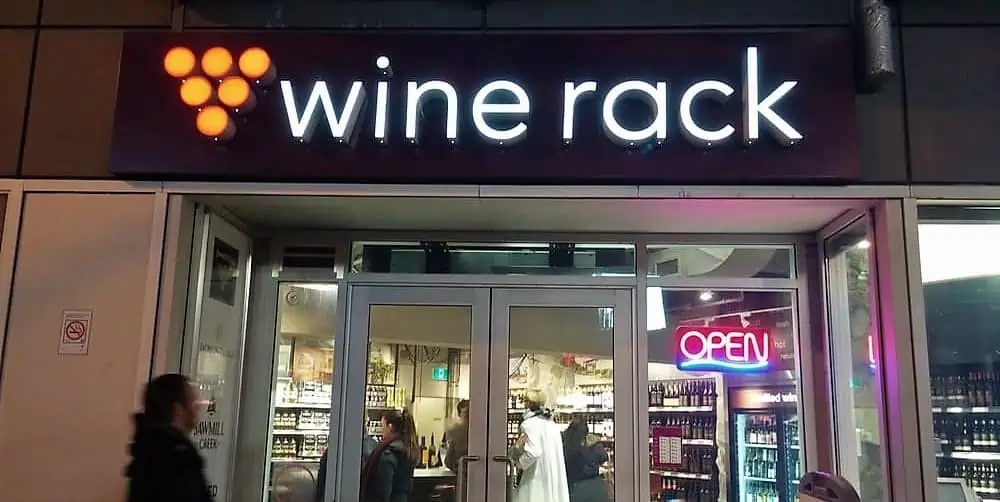
This is how Arterra announced the new brand (by the way, the only Blake Boulevard I can find on Google is in Ottawa):
“New Blake Boulevard!
“Meet Blake Boulevard – our new wine brand that will bring you to the West Coast with every sip. Try Blake Boulevard’s complex and full-bodied Cabernet Sauvignon or crisp and fresh Sauvignon Blanc.”
When you look at the bottle, you need to search for the key words found in small type of the back label: “International blend from imported and domestic grapes.”
I was puzzled. Why was this Instagrammer, who first featured this wine through their feed, supporting an IDB wine? I rarely see these wines being touted by wine writers or IG story tellers as a recommendation (thankfully), especially when it is not even pointed out that it is mostly sourced from foreign grapes and branded to appear as a wine from California. The IG post had a link to a story on a popular online lifestyle magazine (written by the same person) about wines to buy for a weekend in Ontario and included notes for both the Blake Boulevard Cabernet Sauvignon and Sauvignon Blanc, which sell for $14.95 on sale ($19.95 regular price). You can also choose the 3 L box for $49.95 on sale or $59.95 regular price.
This is how the influencer describes the Cabernet Sauvignon:
“This is a Cab Sauv that invokes swaying palm trees, golden sunsets, and legendary glamour. Bringing to the glass notes of blackberry, black cherry, and a hint of cinnamon.”
This is how Arterra describes its own Blake Cabernet Sauvignon:
“Welcome to Blake Boulevard. Swaying palm trees, golden sunsets, and legendary glamour. Bringing you to the West Coast with every sip, our Cabernet Sauvignon is complex with notes of blackberry, black cherry, and a hint of cinnamon. You’ve arrived.”
That is as close to word for word as you can get. Did the influencer taste the wine? Let’s check the Sauvignon Blanc reviews and see how they stack up.
This is how the influencer describes the Blake Sauvignon Blanc:
“Showing off a west-coast wine style with a crisp and fresh Sauv Blanc filled with notes of white peach, grapefruit, and passion fruit.”
This is how Arterra describes its own Blake Sauvignon Blanc:
“Bringing you to the West Coast with every sip, our Sauvignon Blanc is crisp and fresh with notes of white peach, grapefruit, and passion fruit. You’ve arrived.”
Again, pretty much word for word, and yet it somehow travels to an online magazine in a story by the same person as if it is real editorial, not sponsored content and, when you research it, the words for the reviews come directly from the company’s own PR bumph (or the language used is a crazy coincidence).
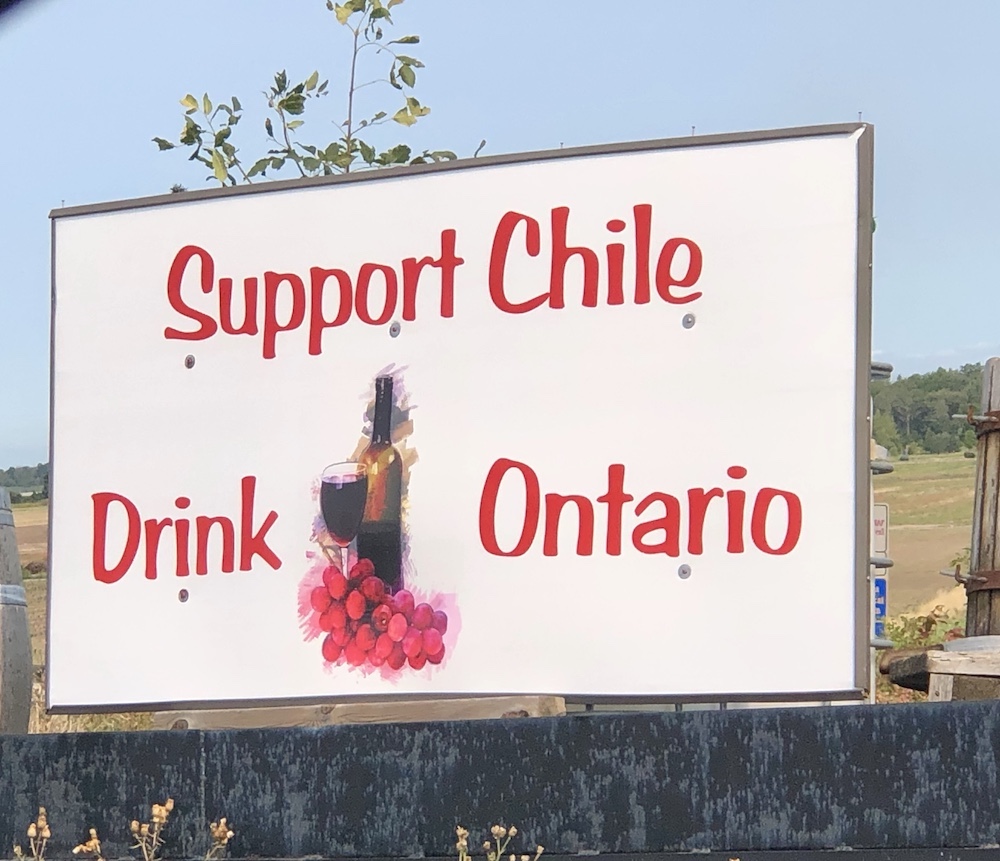
International Domestic Blends are in the news these days. The big companies who hold most the licences are part of a unified group making a big push for the government and the LCBO to rally around VQA wines and help grow the category by implementing key policies, like those in leading global tourism economies and premium wine industries, to reduce the tax burden placed on Ontario wineries. Niagara has the potential to drive at least $8 billion in additional real GDP over the next 25 years, the report funded by the unified group reads. “This represents an uplift of roughly 35% above baseline estimates in the region.” You can read the full details of the Uncork Ontario report here in this post elsewhere on Wines in Niagara. But the key takeaways are listed below:
• The tax burden on Ontario wine is too high: Ontario’s wine industry is the most heavily taxed in the world. Ontario’s wine producers also don’t have direct delivery privileges in their own markets. What’s more, leading wine jurisdictions from around the world receive billions of dollars in subsidies.
• Retail expansion must be done right or else it threatens the future of Ontario wine and further supports heavily subsidized, foreign wineries: The GDP impact of a private retail model on domestic wine sales and tourism was estimated to be a negative $760M in GDP at year 10 after retail expansion, before indirect and induced effects.
• The LCBO holds the future of the domestic wine industry in its hands. It must make our domestic industry its priority—or stunt its growth: The market share for Ontario wines has remained relatively flat over the last 20 years. A major contributing factor is the lack of representation on LCBO shelves. If the Ontario wine’s market share by sales (33%) increased to that of B.C.’s market share (47%), it could provide $800 million in additional GDP over a ten-year period to Ontario’s economy.
Deep in the full report, in a section called “the future of retail,” there is a call to not alter the landscape in terms of those nearly 300 licences that allow a smattering of big wine companies to sell wine in private shops.
“The future of the Ontario alcohol retail landscape could potentially be at risk due to expansion plans from the government,” the report says. “The retail laws and policies in Ontario have a significant impact on the economic landscape of the wine sector and the future of retail. Furthermore, its impact on economic development objectives are essential aspects that need to be considered.”
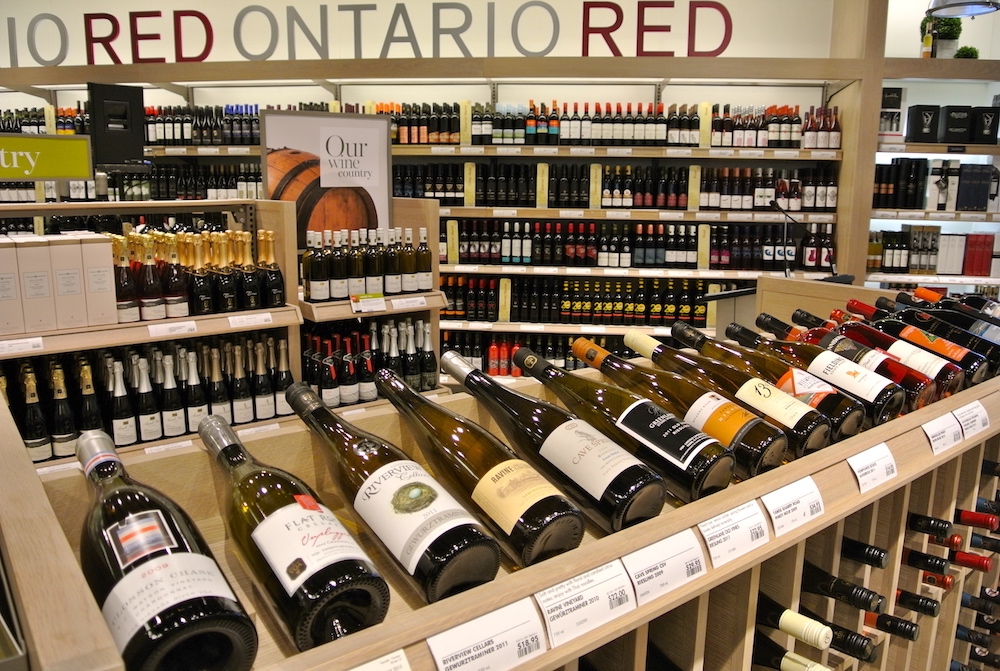
In Ontario, the Master Framework Agreement (MFA) governs the sale of alcohol and outlines the types of retailers eligible to sell it. The Winery Retail Stores (WRS) system is a critical component of the local wine industry, providing Ontario-based wineries with the right to sell their products in tightly regulated, private retail locations, the report says. The WRS network has 292 total distribution points and is protected by the MFA and international trade agreements. Grocery and convenience store industries are seeking to end protections for WRS stores when the MFA expires on Jan. 1, 2026.
A 2018 Deloitte study on the consequences of a move to a private retail model revealed that a shift towards such a model was estimated to have a significant impact on Ontario’s agriculture with a 59% decline in wine grape sales, the report says. The impact of a private retail model on domestic wine sales and tourism was estimated to have a negative impact of $760M at year 10 after the retail expansion, before indirect and induced effects. “The loss of the WRS distribution channel would have a significant negative economic impact on the local wine industry,” the report concludes.
With prolific influencers beginning to normalize IDB wines with flattering reviews (or any attention at all), and a unified group of key wine industry associations urging the government to save the private stores owned by the big companies, where does this leave the rest of the industry? In a real pickle, I suspect.
This is the sad reality: To the end of the fourth quarter (2022/2023), IDB wine sales at the LCBO outpaced VQA sales by $139 million ($307M vs. $168M in sales). Just let that sink in for a minute. Wines with a measly 25% Ontario content are out-selling genuine VQA wines by nearly 2-1, and the LCBO and Ontario government are OK with that. It’s mind-boggling.
It’s a blemish on an industry that works so hard on the VQA side to produce world-class wines, yet more money is being spent on wines that contain 75% grapes from anywhere but Ontario. Wine tourists do not flock to wineries in Niagara to buy IDB wines, in fact, good luck finding one bottle on display at any winery in Niagara or Prince Edward County.

It’s unfair playing field, and the odds are stacked against the hard-working farmers and VQA-only wineries working every day to produce an authentic bottle of wine that they are proud of, Ontario proud. Every single person involved in the Ontario wine industry should be working hard to find a solution to IDB situation, either by advocating for a gradual reduction of foreign content until it gets to ZERO, or getting these wines dispatched to their own stores. They should not be on the shelves of the LCBO at the expense of Ontario VQA wines. Period.
These private stores operating apart from the province’s established alcohol monopoly, often located inside large supermarkets, are spared the LCBO’s high markups applied to competitors’ products. The two biggest private wine chains — owned by Peller and Arterra, but aren’t alone — exclude smaller, local competitors from their stores and have a monopoly on IDB wines.
All the licences held by mostly Peller and Arterra are protected (that is, “grandfathered”) under Canada-U.S. free trade deals, including NAFTA, which explicitly prevent any other wineries from opening any new offsite stores anymore, according to a report in the Hamilton Spectator.
“The playing field has been frozen in place for decades, except when one company buys out a competitor, which is how the two dominant players were able to acquire more licences and consolidate their networks,” the story said.
Previous governments have tried to reorganize the playing field in another way — not by issuing new licences, but by reclaiming or repurposing those existing licences. But in the end the status quo remained.
The generous rules for blending were drafted decades ago, when Ontario’s struggling wine industry needed protection to transition from low-end hybrid grapes to vinifera. Those blending rules were set to expire in 2000 but have remained in place to this day and the big companies are still fighting to keep it that way without offering any kind of transition to higher Ontario grape content or a timeline to wean off blended wines completely. And that’s a shame.
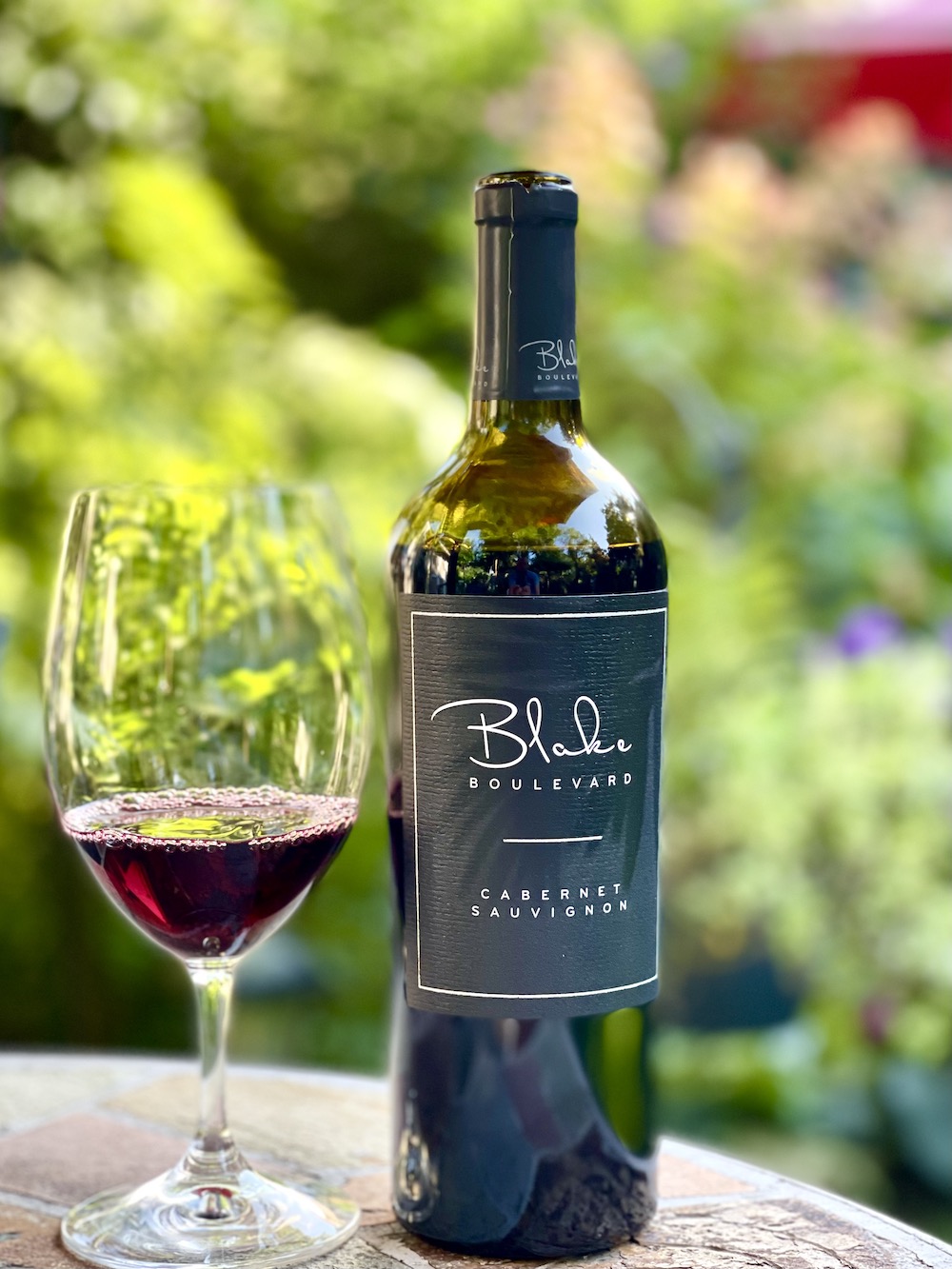
So, did I taste the Blake Boulevard Cabernet Sauvignon NV (at least I can’t find a vintage date on the label at all) wine I purchased and opened for this story? Does it have a California vibe? Would I buy it again? If I want California wine, I’ll buy a California wine. If I want a great Ontario wine, I’ll buy one of those. I hope that answers all those questions.


Thanks for that report. I bought it primarily for the shape of the box, since I’d left home on bicycle without a pannier. I tied it down, and taped, it. And … other than seeing it on the shelf, I wasn’t victimized by the advertising. I get it, though.
I wonder if Canadaland podcast would be interested in your perspective that it’s a bit of an economic/policy scandal, how the Niagara wines are handicapped? Tell them about it. But don’t mention my name, because I think I just confuse them.